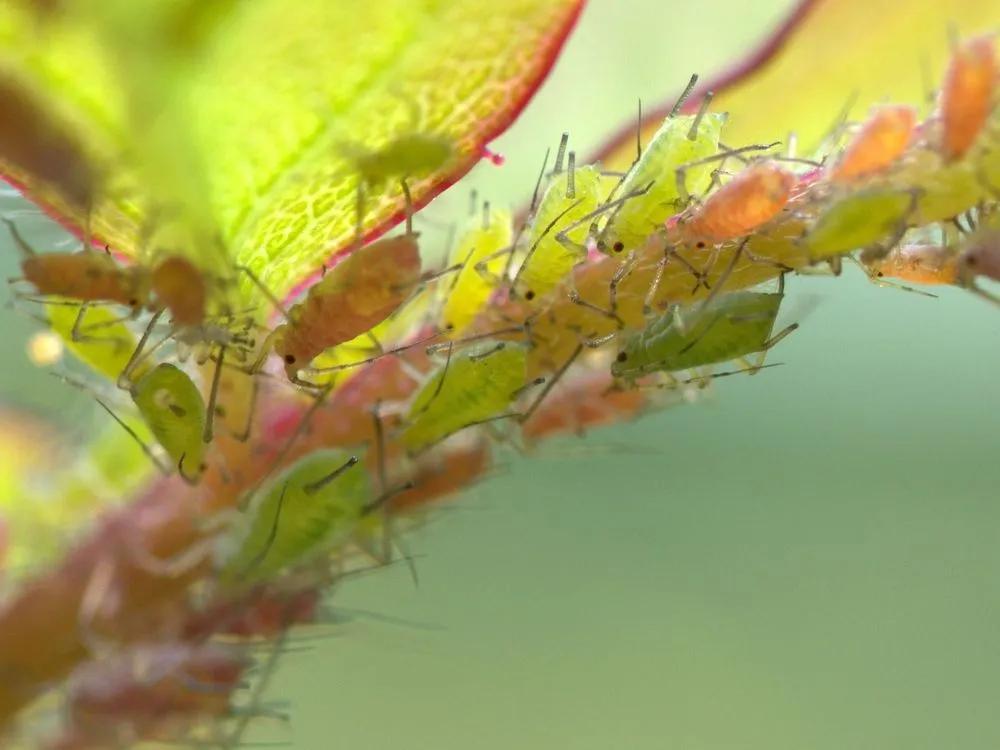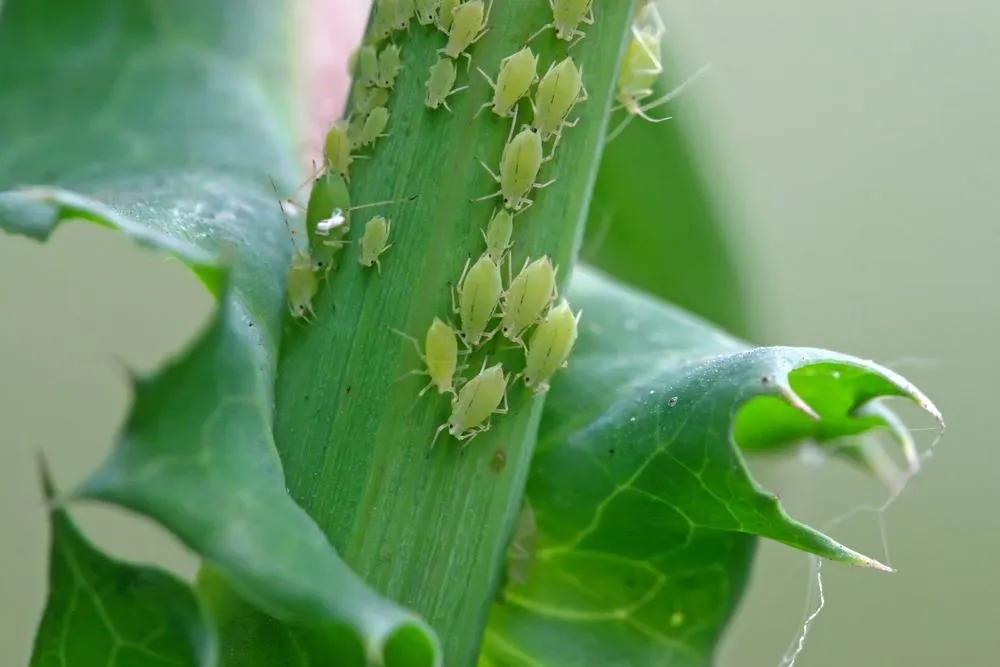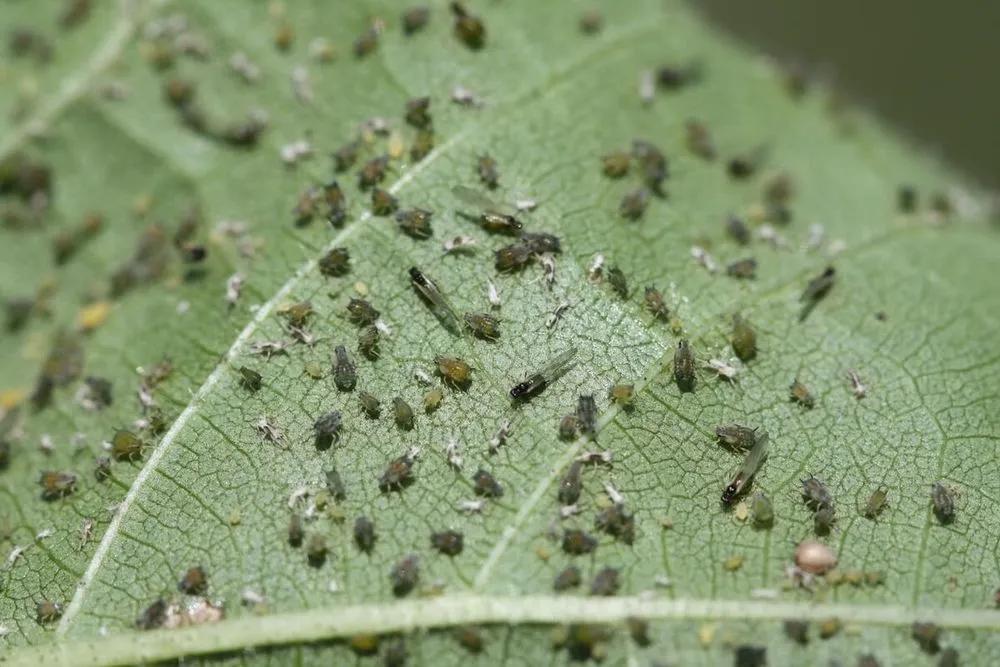Don't underestimate these tiny sap-sucking pests because of their size. They can seriously affect the plant. The "sap-sucking" part in their name hints that they are consuming the plant's sap, which stunts the plant's growth and deforms it in general. In fact, they are using their size as an advantage because they can be unnoticed for a while. And they multiply so quickly that many generations can occur only in one season. That's why getting rid of them as soon as possible is essential.
Aphids



Signs of damage
- Distortion of leaves. For example, leaf curling can be a sign of it.
- Losing of the plant's vigor. The weakening of the plant, in general, is a wake-up call that something is wrong.
- Tiny white flakes on the leaves. These "flakes" are the former skin they shed when they mature. And since Aphids live in colonies, and there are a lot of them, it becomes more visible even to the naked eye.
- Honeydew. These insects are one of the many insects that produce honeydew, a sticky secretion found on the affected foliage.
- Sooty mold. It becomes possible because of honeydew because it can grow.
How to prevent
There are a lot of insects that can eliminate them. Some of them are ladybugs, parasitic wasps, lacewings, etc. You can even order these insects online. Another method to keep Aphids away is planting catnip, mustard, and nasturtium next to the plants because Aphids don't like the smell. And for shade and fruit trees, you can use the horticultural spray as preventive maintenance because it will help to kill overwintering Aphids' eggs.
Heal
A strong stream of water can be helpful in this case, and you can use a hose for this purpose. Insecticidal soaps, neem oil, and horticultural oils are used the most in treating Aphids' invasion. They are undoubtedly effective, but before applying one of them, it is better to follow all the instructions on its package. And you can control them by wiping the leaves with soap every 2-3 weeks, which reduces the chance of their reappearance.
Go Premium to continue reading
Also you’ll get unlimited access to disease identification and all the other beneficial features
More problems
